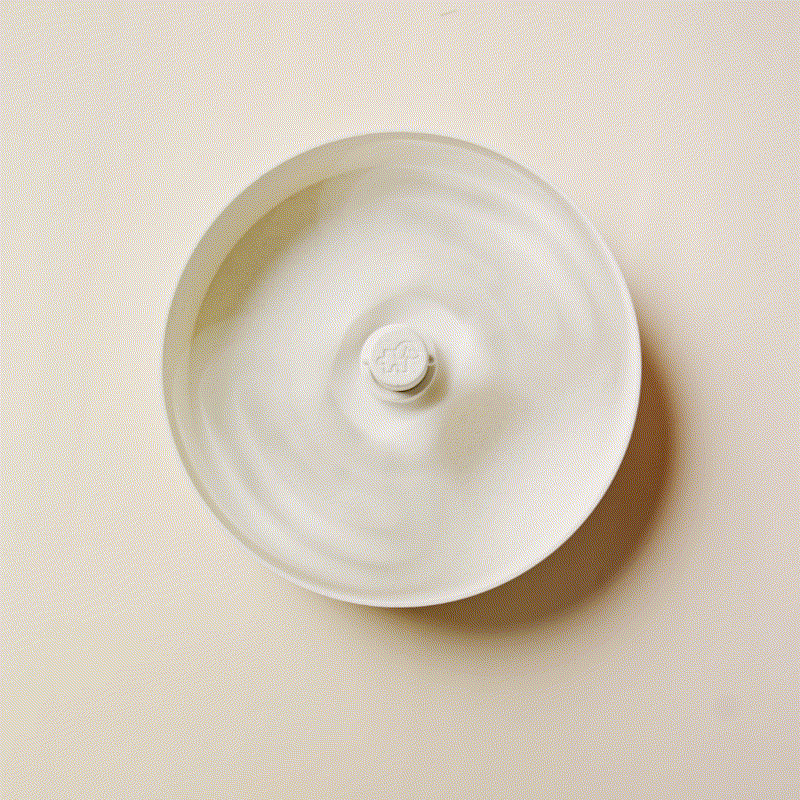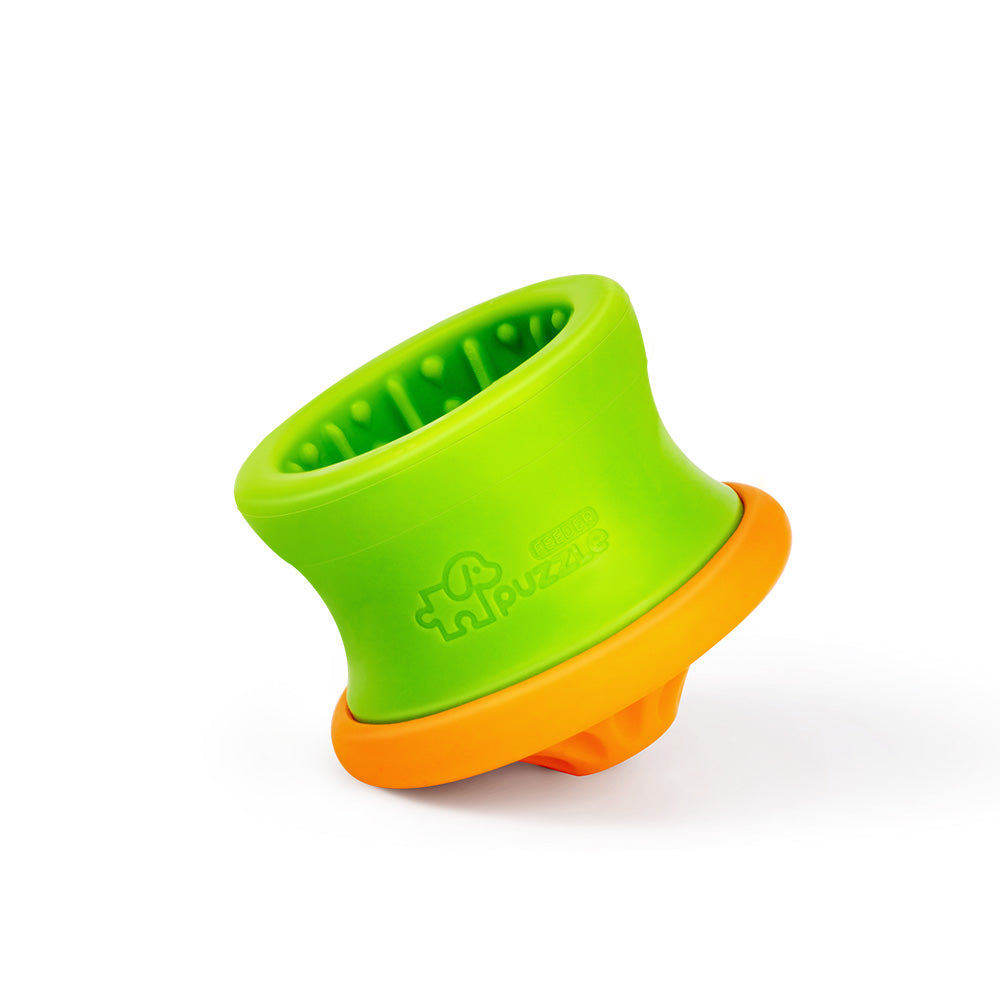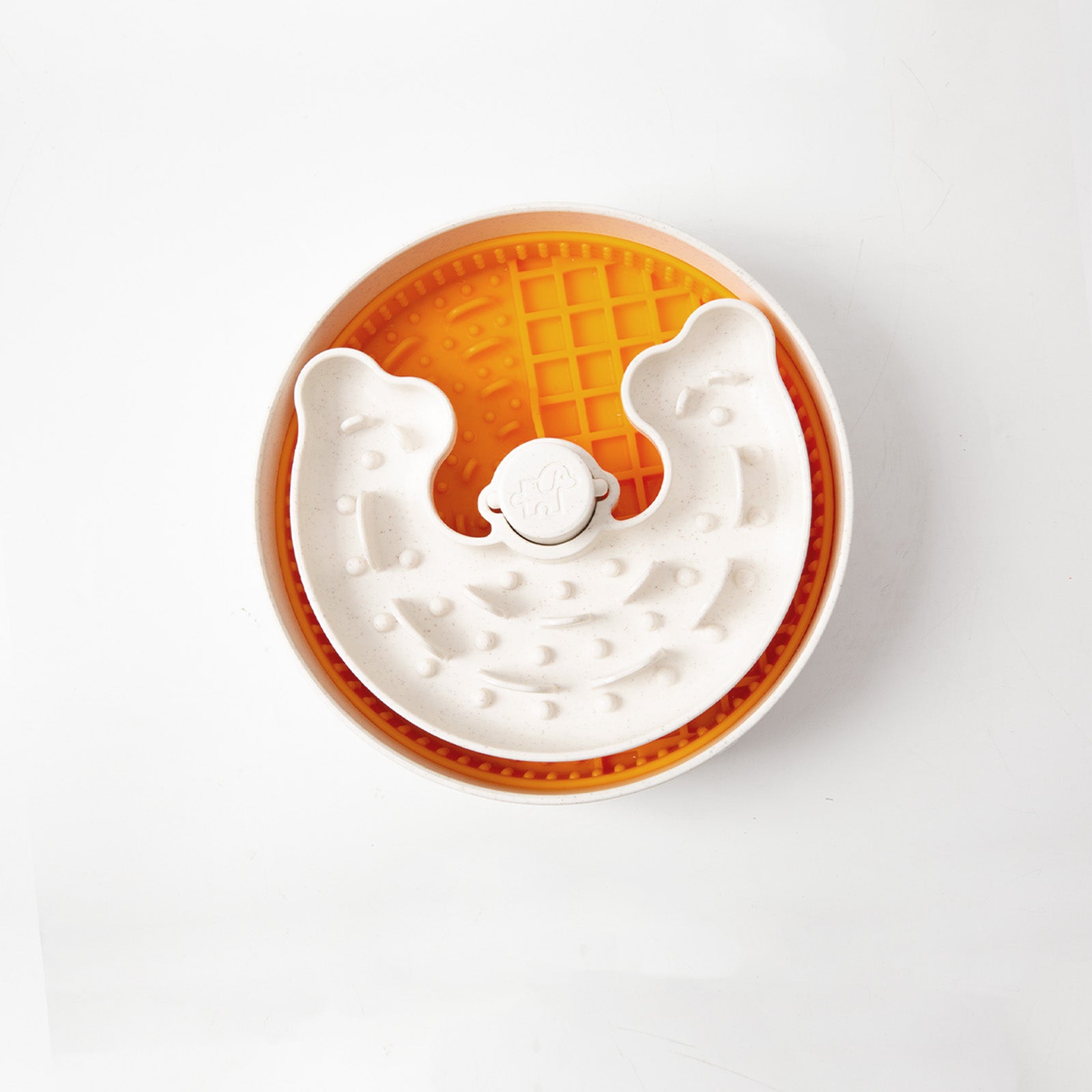If your dog eats like they’re training for a speed-eating contest, you’re not alone. Many of us have watched our dogs inhale their food in seconds, sometimes leaving them coughing or choking.
So why does this happen, and what’s the solution to stop this dangerous habit? Let’s dive in!

Why Do Dogs Eat So Fast?
Fast-eating is an engrained evolutionary habit. In the wild, a fast eater had a better chance of snagging enough food before competition set in. But at home? This old instinct can turn mealtime into a messy (and sometimes nerve-wracking) experience.
Here’s what’s usually behind all that rapid eating and choking:
Food competition
Especially if you’ve got more than one pet, your dog might feel like they need to guard their food and eat fast.
Excitement or anxiety
Some dogs just love food so much (who can blame them?) that they can’t help but dive in fast, while others may eat quickly because they’re a little anxious.
Underlying health issues
If your dog consistently chokes or gags even when eating slowly, it’s worth checking in with a vet to rule out respiratory issues or swallowing difficulties.
Pro tip: If your dog has always eaten fast, you’re not alone. But if this is a sudden change, it’s a good idea to look into any recent stressors or health changes.

Simple Ways to Keep Your Dog's Meals Safe and Slow
Ready to help your dog take it easy at mealtime? Here are a few of the best methods I’ve tried (and some tricks from other dog parents) that work wonders to slow them down.
1. Use a Slow-Feeder or Puzzle Bowl
Puzzle bowls are a lifesaver! These slow feed bowls have built-in obstacles, so your dog has to work a little harder to get each bite. It’s like turning mealtime into a mini game, and the best part is that it naturally slows them down.
Quick Tip: If your dog is new to puzzle bowls, they might be a bit confused at first. Stick with it—they’ll get the hang of it and start to see mealtime as a fun challenge.
2. Serve Smaller, More Frequent Meals
Imagine being super hungry and waiting all day for just one or two big meals. If you feed your dog once or twice a day, they may just be overly excited or hungry by the time food hits the bowl. Smaller meals throughout the day can help your dog pace themselves.
What Works for Me: If a few extra meals aren’t realistic with your schedule, you could try a timed feeder that dispenses food gradually. It’s like a gentle nudge to eat slowly, without extra work on your end.
3. Flatten It Out—Serve Food on a Tray or Flat Plate
If you don’t have a puzzle feeder handy, a baking sheet or flat plate can work wonders. When the food is spread out, your dog has to move around a bit more to get each piece. Less gulping, more chewing.
Easy DIY Tip: This trick works especially well for kibble, and it’s a great “no purchase necessary” option for slowing down mealtime.
4. Add a Ball or Safe Toy in Their Bowl
This one’s super simple: drop a tennis ball (or other large, non-chewable object) into their food bowl. They’ll have to eat around the ball, which makes it harder to just gulp everything down at once.
Safety Reminder: Make sure the ball is big enough that it’s impossible for your dog to swallow! Always keep an eye on them while they eat.
5. Hand-Feed as a Last Resort
Hand-feeding might sound like a lot of work, but it’s great for dogs who struggle with serious food anxiety. Plus, it’s a bonding experience. By feeding small amounts at a time, you can help your dog learn to take their time with each bite.
Real Talk: This method works well if you have a little extra time or if your dog’s eating habits are especially stressful. Bonus: it can help reduce food aggression since they’re learning to take food directly from your hand.

Why Slowing Your Dog's Eating Is Worth It
- Better digestion: Eating slower means your dog has time to chew, which helps with digestion and reduces the chances of vomiting or bloating.
- Improved weight control: Slow feeding is an effective portion control method. Eating too fast has been linked to obesity in dogs.
- Calmer, happier meals: When dogs don’t feel rushed, they’re generally more relaxed at mealtime. That means fewer anxious, scarf-and-gag sessions and a happier, healthier pet.
Frequently Asked Questions
Q: Are certain dogs more prone to choking while eating?
Yep! Flat-faced breeds like pugs and bulldogs have shorter airways, so they’re more likely to struggle with fast eating. Dogs that have experienced food competition or tend to be anxious at mealtime are also more prone to choking.
Q: How do I know if my dog needs a slow feeder?
If your dog regularly chokes, gags, or finishes their food in record time, a slow feeder is definitely worth trying. It’s especially helpful for dogs that show signs of food guarding or have a history of respiratory issues.
Q: Can I use a puzzle feeder for wet food?
Yes! Many puzzle feeders work just fine with wet food. Just spread it out, or try using a slow-feeder plate with compartments to make it last longer.
Browse Our Vet-Approved Options
Want to make mealtime safe, fun, and slow? Check out Puzzle Feeder’s range of safe, eco-friendly options designed to help dogs of all breeds and ages enjoy their food at a calmer pace. Here’s to safe, happy meals!


















Leave a comment
All comments are moderated before being published.
Este site está protegido pela Política de privacidade da hCaptcha e da hCaptcha e aplicam-se os Termos de serviço das mesmas.